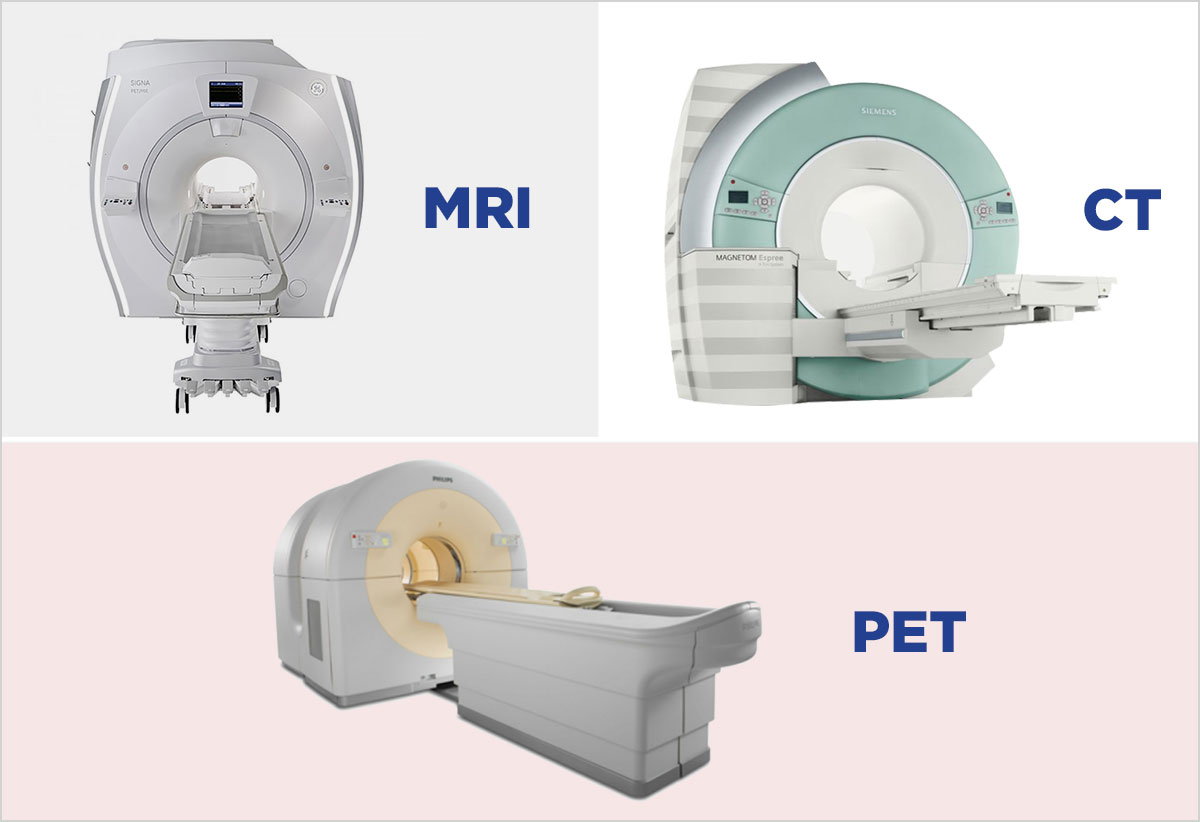MRI, CT and PET – What Do They Mean?

There are so many advancements in the medical industry and there are also remarkable successes in the imaging field. Nowadays, doctors can see the human body from the inside perspective and see more precisely what happening there. The medical professionals have an increased possibility to see the entire body throughout different medical devices and all this comes with many benefits. Using this technology, they are able to detect different type of defects and maladies from a broken bone to some life-threatening conditions such as brain disease or cancer. All doctors who specialize in several imaging techniques are practicing in the area known as “radiology”. It is named according to the process of how often radiation is included in the procedure.
It is good to know that the simplest type of imaging is the X-ray form. This procedure is explained by the fact that tiny amounts of radiation can pass through the body in order to produce an image which is based on the objects that radiation comes across. The objects with higher density like bones, appear in different colors than objects which are lighter. Combining these colors the doctor can see what’s happening inside the affected area. Keep in mind that even in the complex cases where the medical professional needs another more precise image, the X-ray is often the first thing which must be done. This means, that for many conditions, more image testing is required. Below are explained a few of the most common forms of imaging in the field of radiology.
MRI – (Magnetic Resonance Imaging)
This type of imaging device doesn’t utilize radiation. It is working with a combination of radio waves and magnetic force. When these two combine, they produce a different type of image than an X-ray technology provides. Remember that MRIs and also X-rays are very similar in the sorts of disorders they can help identify. These medical imaging devices are often used in professional sports as a testing measure because they produce tests that are effective for injuries such as torn ligaments and broken bones. MRIs can often be utilized as a follow up to a CT scan or an X-ray in order to help doctors to see more details. In some cases, there is a possibility here MRI’s imaging devices are more useful for the detection of tumors and clots. Another thing to remember is that even though an MRI doesn’t use radiation, the procedure is not without risks or a lengthy preparation process.
CT Scan
The abbreviation “CT scan” means a computerized tomography scan and this medical device uses an X-ray technology. This technology is more complex than the simple x-ray because CT scans combine many X-rays which are taken from different angles and it uses an advanced computer technology in order to form more detailed images. The benefit from this medical device is very simple because it is easier to notice every detail of an object when the doctor can see it from multiple positions. It is somehow such an explanation of 2D and a 3D image. It is good to know that CT scans collect many of the same things as simple X-rays, but they transform it in more precise and detailed way. These devices can be beneficial for the detection of smaller items such as tumors and also cancers, and also for monitoring and identifying internal bleeding.
PET scan
PET scan is the abbreviation of positron emission tomography, or simply a PET scan, and it is a type of imaging to view bodily organs. The blood flow inside the body is utilized as a delivery system. During the PET scan procedure the radiologist will inject liquid containing small amount of radiant into the vein where it spreads in the blood stream. According to the fact that the blood usually collects near the targeted organ, most of the liquid will do the same. After this, the radiologist will pass a scanner over the body which is provided to collect the radiation in the blood. The obtained pictures are later transmitted to a computer. These devices are useful for organ-and blood-related disorders and they are also used to document the activity of the brain. Keep in mind that they aren’t the first approach when it comes to detecting cancer, but they are often used to help test different form of treatment once a diagnose has been made. It is good to know that the PET images are less detailed than those taken from CT scans or a MRI, the radiologist can ask for PET-CT scan. This test combines the images and gives more accurate image. Another thing to consider is that the risks of PET scans are similar in nature to CT scans and X-rays because of the amount of the used radiation.

 SUBSCRIBE TO OUR BLOG
SUBSCRIBE TO OUR BLOG
